Related Research Articles

The qeleshe, also known as plis and qylat, is a white brimless felt skull cap traditionally worn by Albanians. It has spread throughout Albanian-inhabited territories, and is today part of the traditional costume of the Albanians. The height and shape of the cap varies region to region.
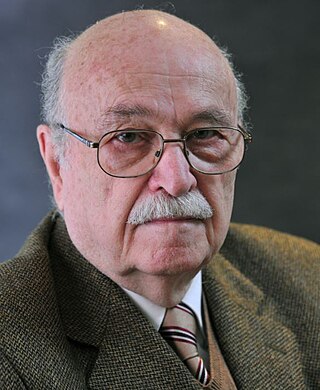
Aleksandër Gabriel Meksi is an Albanian archaeologist and politician who served as the 28th Prime Minister of Albania from April 13, 1992, to March 11, 1997. A former archaeologist, he was the first person to be prime minister of Albania after the end of communist rule. Meksi was a member of the Democratic Party of Albania and took office at the same time as President Sali Berisha, who also belonged to that party. Before entering politics, Meksi was a researcher and restorer of monuments of medieval architecture.
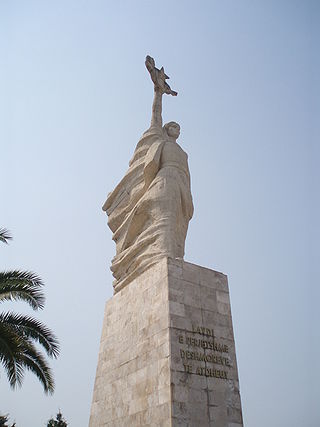
Mother Albania is a 12 m statue located at the National Martyrs' Cemetery of Albania in Albania, dedicated in 1972.

Rrogozhinë is a town and a municipality in Tirana County, centrally located in the Western Lowlands region of Albania. It was formed at the 2015 local government reform by the merger of the former municipalities Gosë, Kryevidh, Lekaj, Rrogozhinë and Sinaballaj, that became municipal units. The seat of the municipality is the town Rrogozhinë.
Mücü is a village and municipality in the Ismailli Rayon of Azerbaijan. It has a population of 229. The working population is mostly engaged in agriculture. The city is supplied with electricity. The region of the village is located in the "Bado-Basgal" tourism region. The tourism route going through the "Khan", "Fit daghi" and "Haram towers" passes close to the village.
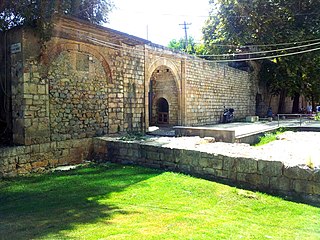
Fortress of Justinian or simply known as Tirana Castle is a castle in Tirana, Albania. Its history dates back before 1300 and is a remnant from the Byzantine-era. The fortress is the place where the main east–west and north–south roads crossed, and formed the heart of Tirana. The current fortification has three known towers and it is undergoing a process of restoration, for touristic purposes. Inside the fortified walls of the former fortress, there are many buildings that can be visited, including restaurants, hotels, and cultural institutions.

The Skanderbeg Monument is a monument in the Skanderbeg Square in Tirana, Albania. It commemorates Skanderbeg (1405–1468), the national hero in Albania for resisting the Ottomans.
Holy Transfiguration Church, also known as Church of Gjirokastër is an Orthodox church in Gjirokastër, Albania. The church was built in 1784. It is a Cultural Monument of Albania since 1963.
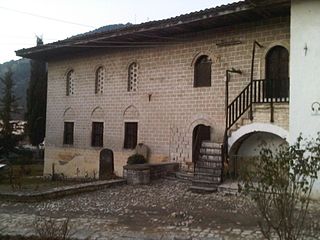
The King Mosque, also known as the Sultan's Mosque or Sultan Bayezid Mosque, is a mosque and a Cultural Monument in Berat City, Berat County, Albania.

The Bachelors' Mosque, formerly known as the Sylejman Pasha Mosque, is a Cultural Monument in Berat City, Berat County, Albania. It became a Cultural Monument in 1961.

The Fatih Mosque, also known alternately as Xhamia e vogël and Xhamia e vjetër is a Cultural Monument of Albania, located in Durrës. It was built in 1502, the year after the Turkish conquest of the city, and named for the Ottoman Sultan Mehmed the Conqueror, (Sulltan Mehmet Fatihu). Closed by the Communist authorities under Enver Hoxha, the mosque became a cultural monument in 1973. Its minaret was torn down but rebuilt in a simpler style after the Communist dictatorship ended.

The Kapllan Pasha Tomb is a Muslim Türbe built in 1817 in the center of Tirana, Albania. The government of Albania declared it a Cultural Monument of the first category in 1948. Its 8 columns are made of carved stone, placed on an octagonal-shaped stone base, and capped with octagonal shape capitals. The former Ottoman ruler of Tirana was interned here in the 19th century, but his remains were later repatriated to Istanbul, Turkey.

The Bride's Tomb is a Cultural Monument of Albania, located in Mullet, Tirana County.

The Sheikh Dyrri Tekke or Shaykh Duri Tekke is a Cemevi teqe in Tirana, Albania.

The Teqe Mosque is a mosque in Gjirokastër, Albania. It is a Cultural Monument of Albania.
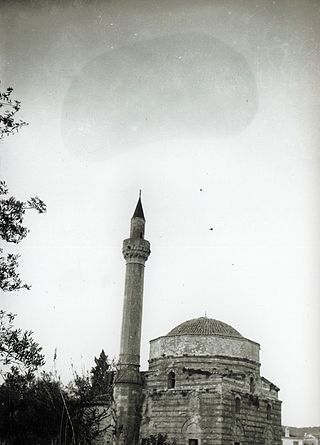
The Muradie Mosque or Lead Mosque is a Cultural Monument of Albania, located in Vlorë. The mosque was built in 1537 by the famous Ottoman Turkish architect Mimar Sinan during the rule of Sultan Suleiman the Magnificent. The construction was completed in 1542 AD.

In Albania, a cultural monument is a construction or work of cultural, historical and artistic value that is built in a visible space, made in memory of important events or prominent people. Cultural monuments are usually under state protection as they are evidence of the history of human development, for the preservation of which there is a public interest.

The architecture of Albania is a reflection of Albania's historical and cultural heritage. The country's architecture was influenced by its location within the Mediterranean Basin and progressed over the course of history as it was once inhabited by numerous civilisations including the Illyrians, Ancient Greeks, Romans, Byzantines, Venetians, Ottomans as well as modern Austro-Hungarians and Italians. In addition, missionaries, invaders, colonisers and traders brought cultural changes that had a large profound effect on building styles as well as techniques.
References
- ↑ "Religious buildings with the "Culture Monument" status". Republic of Albania National Committee for Cult. Archived from the original on 6 July 2011. Retrieved 28 October 2010.